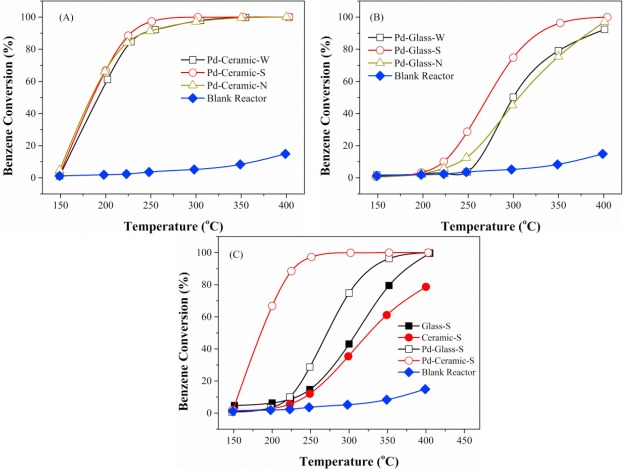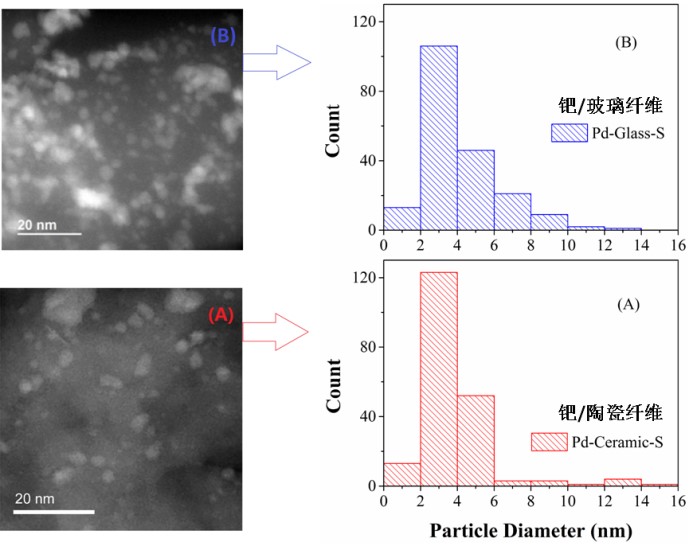Volatile organic compounds (VOCs) are one of the major contributors to air pollution. According to “The Thirteenth Five-Year Plan”, the total VOCs emission in 2020 will drop by more than 10% compared with 2015. With the imposition of increasingly strict emission regulations, there is more and more demand for post-treatment technologies. Catalytic oxidation is considered to be one of the most effective ways for reducing VOCs emissions. Among different kinds of catalysts, the noble metal (Pd and/or Pt) catalysts are recognized as some of the most desirable candidates. Increasing the dispersion of noble metal particles and changing their chemical state are believed to be the main contributions of the supports. Thus the support effect is profound, and their activity and stability has also been found to be closely related to the support type. Usually, noble metal catalysts have been prepared by loading Pd/Pt species on Al2O3, SiO2, or TiO2 substrates. Some novel ordered porous metal oxides such as Co3O4, Mn2O3 etc and molecular sieve supports such as Beta, SBA-15 have also been investigated as effective supports recently. Since VOCs combustion requires catalysts with excellent activity,mass and heat transfer, and thermal stability, the development of new catalysts with good combined properties is the key to the application of this technology.
This study has been published in the Chemical Engineering Journal entitled "Palladium supported on low-surface-area fiber-based materials for catalytic oxidation of volatile organic compounds" with Dr. Deng Hua as the first author from HE Hong’s group on Sep 15, 2018. Fiber-based materials with good thermal stability, mass and heat transfer performance were used as novel supports, over which noble metal palladium was loaded via different methods to prepare new catalysts. The results indicate that fiber-based materials with low-surface-area can highly disperse noble metals, and the Pd-ceramic fiber catalyst exhibited the best activity in benzene combustion (as shown in Figure 1). Strong support acidity and effective dispersion of Pd particles contributed to the good performance of ceramic-fiber-based catalyst (as shown in Figure 2). On the feature of fiber materials such as good mechanical strength, good mass and heat transfer performance, and plasticity, the catalysts are suitable for different types of combustion reactors. We have already applied an invention patent on the base of this study, and we will focus on the mass production in future. The work was supported by the National Natural Science Foundation of China and the National Key R&D Program of China.

Figure 1 (A) C6H6 conversion over 0.8?wt% ceramic-based catalysts (B) C6H6 conversion over 0.8?wt% glass-based catalysts (C) Comparison of the C6H6 conversion over different fiber-based catalysts.

Figure 2 The particle distribution of Pd-fiber-based catalysts (A) Pd-Ceramic-S, (B) Pd-Glass-S.